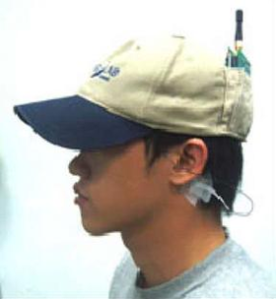The Platform: The New Idea Lab: The Urban Pod
The Twitter: Cat Naps are back in!
The Big Idea: Deep rest influences creative synthesis of ideas!
Remember kindergarten “quiet time”? — Those rows of squeaky cots, the whispering, the agony of waiting out time until we could get up to play!? Well leave it to science and inventive high tech ingenuity to tap the wisdom of childhood: Napping Pods!
Today high tech napping pods are on the market. Recently reviewed in Wired Magazine and the subject of Google buzz, these “metro” pods are said to promote brain rest with musical and other aids to encourage a neural shift into “quiet time.”
From the standpoint of neural rest, I love it when science reinforces a childhood and an ancient wisdom, in this case, one that has long been recognized by the creative, the somatic and the psychological communities, namely: Incubation leads to creation! Yes, providing an appropriate break for neural rest during intense think-tanking allows our brain to rest in order to digest the onslaught of ideas, feelings and intuitions. Nap pods, in other words, mimic the “rest and digest” processes of our parasympathetic nervous system – the system that allow our bodies to restore energy that we’ve depleted with activity between meals.
The more we learn about the role of parasympathetic nervous system in brain/mind/body functioning, the more we understand why cognitive scientists would target sleep to understand how the brain replenishes itself during naps. And the more we learn about the role of sleep and neural rest in creativity, the more we can appreciate why artists and writers naturally choose to include aimless doodling into their studio practice or why business coaches and psychotherapists advocate relaxation to counter creative blocks, or why leading yoga teachers insist on incorporating savasana (“corpse pose”) and even yoga nidra (“waking sleep”) into one’s daily yoga practice.
So whether you’re brain-storming a new idea, preparing creative strategies for a race, improving “your game” or opening the channels of artistic practice, consider all of the possibilities, both high and low tech for catching some zzzzzzssss!
For more tips on brain rest, feel free to surf this blog. ***
Here’s to Brain Rest!
Dr. G.
***For corporate or private consults on brain and body wellness and high performance, please write to me through the GGI website or leave a comment below.



